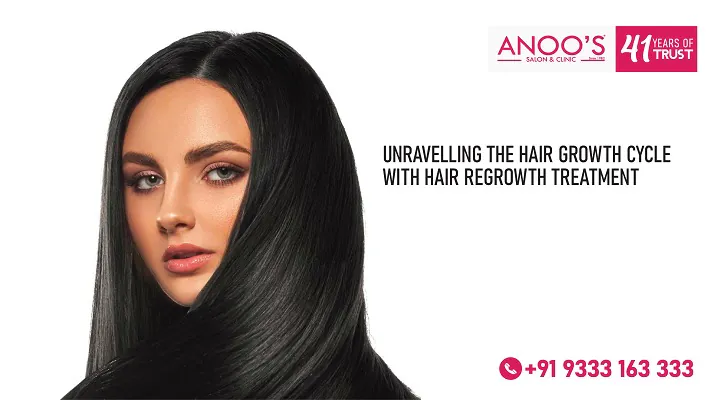
Unravelling the Hair Growth Cycle with Hair Regrowth Treatment
Discovering the intricacies of the hair growth cycle can unlock the secrets to achieving luscious locks. In this blog, we will delve into the science behind hair regrowth, exploring the stages that determine the quality and thickness of your hair. Whether you’re seeking a hair regrowth treatment, hair restoration treatment, or interested in understanding the Hair Loss Tricho Scalp Treatment, this article will provide valuable insights. Let’s embark on this journey together and uncover the fascinating science of the hair growth cycle!
Understanding the Hair Growth Cycle
The Basics of Hair Growth
The hair growth cycle consists of three phases: the anagen phase, the catagen phase, and the telogen phase. Each phase plays a crucial role in determining hair length and health. Let’s explore these phases:
- Anagen Phase: The Growth Phase
During this phase, hair follicles actively produce new cells, resulting in hair growth. Lasting two to seven years, depending on various factors such as genetics and overall health. The anagen phase determines the potential length of your hair.
- Catagen Phase: The Transitional Phase
Following the anagen phase, the catagen phase begins. Lasting approximately two weeks, hair follicles shrink and detach from the blood supply in preparation for the next phase.
- Telogen Phase: The Resting Phase
In the telogen phase, hair follicles remain dormant for two to three months. Some hair shedding is normal during this phase as new hair begins to grow in the anagen phase.
Influences on Hair Growth
Factors That Matter
Several factors can impact the hair growth cycle and the rate at which hair regrows. Let’s consider these influences:
- Genetics: Your genetic makeup determines your unique hair growth patterns. Some individuals have longer anagen phases, resulting in longer hair, while others have shorter growth phases, leading to shorter hair.
- Hormonal Changes: Fluctuations in hormones, such as during pregnancy or menopause, can affect the hair growth cycle. Hormonal imbalances may cause hair thinning or excessive shedding.
- Nutritional Deficiencies: A balanced diet rich in essential vitamins, minerals, and proteins is crucial for healthy hair growth. Deficiencies in nutrients like iron or vitamin D can hinder the hair growth cycle.
- Scalp Health: A clean and healthy scalp provides an optimal environment for hair growth. Conditions like dandruff, scalp infections, or excessive oiliness can disrupt the hair growth cycle and impede regrowth.
Hair Regrowth Treatments
Unlocking Solutions
Various hair regrowth treatments are available for those experiencing hair loss or seeking to enhance hair regrowth. Consider the following options:
- Topical Treatments: FDA-approved topical treatments containing minoxidil can stimulate hair regrowth by prolonging the anagen phase and promoting scalp blood circulation.
- Low-Level Laser Therapy (LLLT): LLLT utilizes red light therapy to stimulate hair follicles, increase blood flow, and encourage hair regrowth. This non-invasive treatment option is gaining popularity due to its effectiveness and minimal side effects.
- Hair Transplantation: For individuals with advanced hair loss, hair transplantation offers a long-lasting solution. This procedure involves transplanting healthy hair follicles from one area of the scalp to thinning or balding areas, resulting in natural-looking hair regrowth.
Understanding the hair growth cycle is the key to achieving healthy and vibrant hair. Whether you’re considering a hair regrowth treatment, hair restoration treatment, or are interested in the Hair Loss Tricho Scalp Treatment, addressing the underlying factors affecting hair growth is essential. Unlock the secrets of beautiful hair at Anoo’s Salon & Clinic, where personalized solutions await you. Take the first step towards revitalizing your locks and boosting your confidence with the science of hair regrowth!

